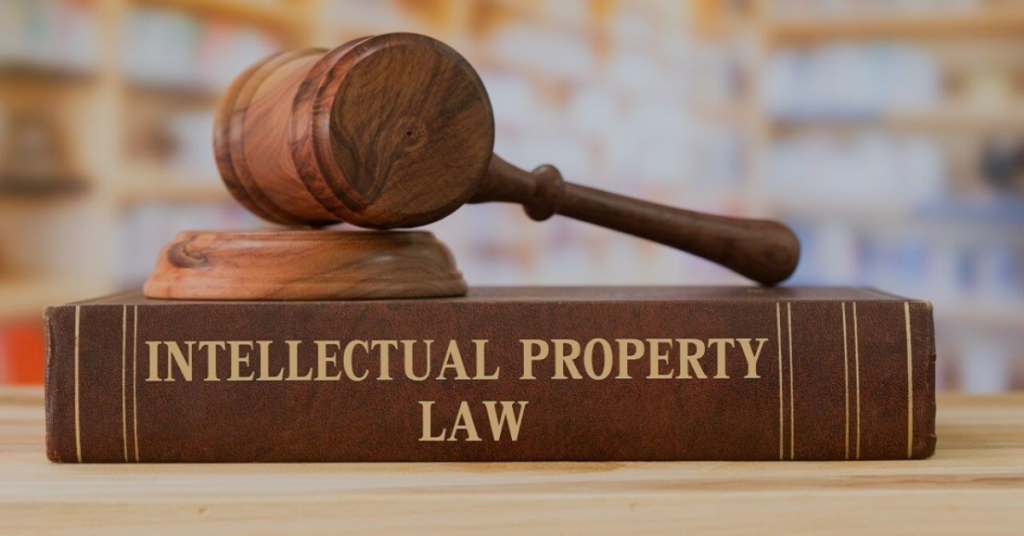Step-by-Step Guide to Filing Auction-based Partition Suits in Chandigarh Courts
Co-ownership of property can often lead to disputes, particularly concerning the division of assets. When amicable solutions fail, resorting to legal recourse becomes necessary. In Chandigarh, filing an auction-based partition suit is a common method to resolve such conflicts. This comprehensive guide outlines the step-by-step process involved, ensuring clarity and compliance with Indian law.
Understanding Partition Suits and Auction-Based Partition
A partition suit is a legal proceeding initiated to divide jointly owned property among the co-owners. The objective is to allocate distinct and separate ownership to each party, eliminating joint ownership. When physical division is impractical or disadvantages one or more co-owners, the court may order an auction of the property. The proceeds from the auction are then distributed among the co-owners proportionally to their respective shares.
An auction-based partition is preferred when:
- The property cannot be physically divided equitably.
- One or more co-owners are unwilling to buy out the shares of others.
- All co-owners agree that an auction is the most efficient method of division.
Legal Framework Governing Partition Suits in Chandigarh
Partition suits in Chandigarh are primarily governed by the following laws:
- The Partition Act, 1893: This Act provides the legal framework for partition suits and empowers the court to order a sale (auction) of the property under certain circumstances.
- The Code of Civil Procedure, 1908 (CPC): The CPC outlines the procedures for filing and conducting civil suits, including partition suits.
- The Transfer of Property Act, 1882: This Act deals with the transfer of property rights, including those arising from partition.
- Punjab Laws (Application) Order, 1948 & East Punjab General Clauses Act, 1948: These are relevant as Chandigarh operates under Punjab Laws.
- Specific Court Rules and Practices: The Chandigarh District Courts have specific rules and practices that govern the filing and conduct of cases. These should be consulted for local requirements.
Step 1: Assessing the Co-ownership and Legal Rights
Before initiating a partition suit, it's crucial to thoroughly assess the following:
- Ownership Documents: Obtain certified copies of all relevant property documents, such as sale deeds, gift deeds, inheritance documents, and mutation records. These documents establish the ownership and shares of each co-owner.
- Co-owners Identification: Identify all co-owners of the property and their legal representatives (in case of death). Ensure accurate details of their names, addresses, and contact information.
- Share Determination: Clearly determine the share of each co-owner based on the ownership documents. The shares are typically expressed as fractions or percentages.
- Legal Advice: Consult with a property lawyer specializing in partition suits in Chandigarh. They can assess the strength of your case, advise on the legal strategy, and guide you through the complex legal process.
Step 2: Attempting Amicable Resolution
Prior to filing a suit, it's advisable to attempt an amicable resolution with the other co-owners. This demonstrates to the court that you have made a genuine effort to resolve the dispute out of court.
- Negotiation: Initiate direct negotiations with the other co-owners to discuss the possibility of partition through mutual agreement.
- Mediation: Engage a neutral third party (mediator) to facilitate discussions and help reach a compromise. The Chandigarh Mediation Centre provides mediation services for property disputes.
- Legal Notice: If negotiations fail, send a formal legal notice to the other co-owners through your lawyer. The notice should clearly state your intention to file a partition suit if a mutually agreeable solution is not reached within a specified timeframe.
Step 3: Drafting and Filing the Partition Suit
If amicable resolution proves unsuccessful, the next step is to draft and file the partition suit in the appropriate court.
-
Jurisdiction: Determine the appropriate court based on the property's location and valuation. In Chandigarh, partition suits are typically filed in the Civil Courts of the District Courts. Consult with your lawyer to ensure the correct jurisdiction.
-
Plaint Drafting: The plaint is the initial document filed in the court, outlining the details of your case. It must be drafted carefully and accurately, including the following information:
- Title of the Suit: "Suit for Partition"
- Parties: Names, addresses, and descriptions of all plaintiffs (co-owners filing the suit) and defendants (other co-owners).
- Property Description: A detailed description of the property, including its location, boundaries, area, and any existing structures.
- Ownership Details: A clear statement of the ownership rights of each co-owner, including their respective shares.
- Cause of Action: The reason for filing the suit, including the failure of negotiations and the need for partition.
- Relief Sought: The specific relief you are seeking from the court, such as a decree for partition and a direction for auction of the property.
- Valuation of the Suit: The market value of the property, which determines the court fees payable.
- Verification: A statement verifying the accuracy of the information provided in the plaint, signed by the plaintiff.
-
Supporting Documents: Attach all relevant documents to the plaint, including:
- Certified copies of ownership documents (sale deed, gift deed, inheritance documents, etc.)
- Mutation records
- Legal notice and acknowledgment receipts (if any)
- Valuation report of the property (if available)
-
Court Fees: Pay the required court fees based on the valuation of the suit. The court fees can be paid through challan or online payment methods, as prescribed by the Chandigarh District Courts.
-
Filing the Suit: File the plaint and supporting documents with the court registry. Obtain an acknowledgement receipt with the case number and date of filing.
Step 4: Court Proceedings and Preliminary Decree
After filing the suit, the court will initiate the following proceedings:
- Summons to Defendants: The court will issue summons to the defendants (other co-owners), directing them to appear in court and file their written statements.
- Written Statement: The defendants must file their written statements within the prescribed time, responding to the claims made in the plaint. They may also raise their own defenses or counterclaims.
- Replication: The plaintiff may file a replication (reply) to the written statement, addressing the defenses or counterclaims raised by the defendants.
- Framing of Issues: Based on the pleadings (plaint, written statement, and replication), the court will frame the issues that need to be decided in the suit. These issues define the scope of the trial.
- Evidence: Both parties will be required to present evidence to support their claims. This may include oral testimony of witnesses and documentary evidence.
- Arguments: After the evidence is presented, both parties will present their arguments to the court, summarizing the evidence and arguing their case based on legal principles.
- Preliminary Decree: If the court finds that the plaintiff is entitled to partition, it will pass a preliminary decree declaring the shares of each co-owner and directing a mode of partition. In the case of an auction, the court will order the appointment of a commissioner to oversee the auction process.
Step 5: Auction Process and Final Decree
Following the preliminary decree, the auction process will be conducted under the supervision of the court-appointed commissioner.
- Appointment of Commissioner: The court will appoint a commissioner, typically an advocate or surveyor, to oversee the auction process.
- Valuation of Property: The commissioner will obtain a valuation report of the property from a qualified valuer. This valuation will serve as the reserve price for the auction.
- Auction Notice: The commissioner will issue a public notice of the auction, inviting interested bidders to participate. The notice will be published in newspapers and other media, as directed by the court.
- Conduct of Auction: The auction will be conducted in a transparent and fair manner, with the commissioner overseeing the bidding process. The highest bidder will be declared the successful bidder.
- Deposit of Bid Amount: The successful bidder will be required to deposit a certain percentage of the bid amount immediately, and the remaining amount within a specified timeframe.
- Confirmation of Sale: After the full bid amount is deposited, the commissioner will submit a report to the court, and the court will confirm the sale.
- Distribution of Proceeds: The sale proceeds will be distributed among the co-owners proportionally to their respective shares, after deducting the expenses of the auction.
- Final Decree: After the distribution of proceeds, the court will pass a final decree, concluding the partition suit. The final decree will declare the partition complete and extinguish the joint ownership of the property.
Key Considerations and Potential Challenges
- Delay: Partition suits can be lengthy and time-consuming, often taking several years to resolve. This is due to the complexity of the legal issues, the number of parties involved, and the court's workload.
- Disputes over Valuation: Disputes over the valuation of the property can arise, leading to delays and additional expenses. It's important to obtain a fair and accurate valuation from a qualified valuer.
- Objections to Auction: Co-owners may object to the auction process or the sale price, leading to further litigation.
- Legal Expenses: Partition suits can be expensive, involving court fees, lawyer's fees, commissioner's fees, and other expenses.
- Title Issues: Any pre-existing title issues with the property can complicate the partition suit and delay the process. It's important to conduct a thorough title search before initiating the suit.
Conclusion
Filing an auction-based partition suit in Chandigarh courts is a complex legal process that requires careful planning and execution. By following the step-by-step guide outlined above, and consulting with a qualified property lawyer, you can navigate the process effectively and achieve a fair and equitable division of your jointly owned property. Remember to prioritize amicable resolution, gather all necessary documentation, and comply with the court's procedures to ensure a successful outcome. While this guide provides a general overview, specific circumstances may vary, and seeking professional legal advice is crucial.




